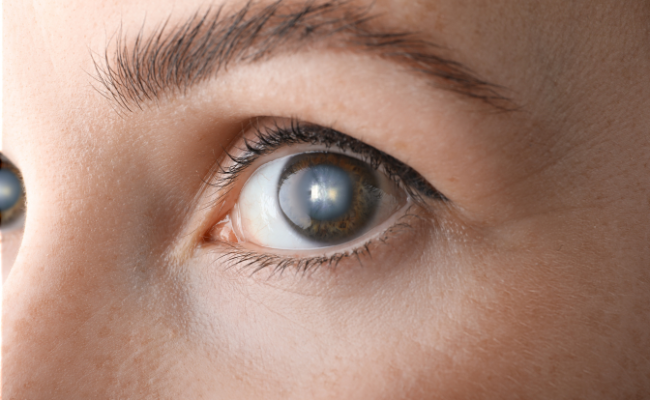How to Treat Age-related Cataracts?
- December 12, 2023
- No Comments

What are Age-Related Cataracts?
Age-related cataracts, a common affliction as individuals age, involve the clouding of the eye's lens due to protein buildup, leading to a progressive loss of transparency. This condition results in blurred vision, dulled colors, and sensitivity to light glare. Simultaneously, senile cataract, a vision-impairing consequence of aging, shares similarities, gradually clouding and thickening the lens, becoming a leading cause of treatable blindness globally.
As these conditions progress, they manifest as cloudy patches on the lens, initially causing blurry and misty vision. Left untreated, these patches enlarge over time, eventually leading to blindness. In youth, eye lenses function like clear glass, offering clarity, but aging transforms them into a frosted texture akin to bathroom glass. This natural aging-related phenomenon highlights the urgency of addressing age-related cataracts due to their substantial impact on vision.
Why Do Age-Related Cataracts Occur?
The development of age-related cataracts is a natural part of the aging process. The lens of the eye is made up of water and protein. Over time, some of the protein may clump together and cloud a small area of the lens, forming a cataract. As these clumps grow larger and more numerous, they can affect vision and lead to the characteristic symptoms of cataracts.
Various factors can contribute to the development of age-related cataracts, including ultraviolet radiation from the sun, smoking, diabetes, and certain medications. Genetics also play a role, as cataracts tend to run in families.
How Can Age-Related Cataracts Be Treated?
- The most effective treatment for age-related cataracts is surgical intervention. Cataract surgery involves removing the clouded lens and replacing it with an artificial intraocular lens (IOL). This procedure is one of the most commonly performed surgeries globally and is known for its high success rates.
- During cataract surgery, a small incision is made in the eye, and ultrasound energy is used to break up the cloudy lens into small pieces, which are then removed. Once the natural lens is removed, the artificial IOL is inserted to restore clear vision. The surgery is typically performed on an outpatient basis, and most individuals experience significant improvement in their vision shortly after the procedure.
Treatment Solutions for Age-Related Cataracts
- Cataract Surgery: As mentioned earlier, cataract surgery is the primary and most effective treatment for age-related cataracts. The surgery is safe and has a high success rate, with minimal risks.
- Intraocular Lens Options: There are various types of intraocular lenses available for cataract surgery, including monofocal lenses, multifocal lenses, and toric lenses. Monofocal lenses provide clear vision at one distance (usually either near or far), while multifocal lenses offer a range of vision. Toric lenses are designed to correct astigmatism.
- Preventive Measures: While cataracts are a natural part of aging, certain preventive measures can help delay their onset. Protecting your eyes from excessive sunlight by wearing sunglasses, maintaining a healthy lifestyle, and managing conditions like diabetes can contribute to eye health.
- Regular Eye Exams: Routine eye exams are crucial for early detection of cataracts and other eye conditions. Regular check-ups with an eye care professional can help monitor changes in vision and determine the appropriate course of action.
Benefits of Treating Age-Related Cataracts
- Improved Vision: The most apparent benefit of cataract surgery is a significant improvement in vision. Patients often report clearer and sharper vision, allowing them to resume daily activities with greater ease.
- Enhanced Quality of Life: Restoring clear vision through cataract surgery can have a profound impact on an individual's overall quality of life. Activities such as reading, driving, and enjoying hobbies become more accessible and enjoyable.
- Reduced Dependence on Glasses: Depending on the type of intraocular lens chosen, cataract surgery can reduce or eliminate the need for glasses. Multifocal and accommodating lenses can provide a broader range of vision, reducing dependency on corrective eyewear.
- Quick Recovery: Cataract surgery is a relatively quick and straightforward procedure, and most individuals experience a rapid recovery. Many patients notice improved vision within a day or two after surgery, with minimal discomfort.
- Low Risk of Complications: Cataract surgery is considered a safe and low-risk procedure. Complications are rare, and the vast majority of patients achieve successful outcomes with minimal side effects.
Comments (0)